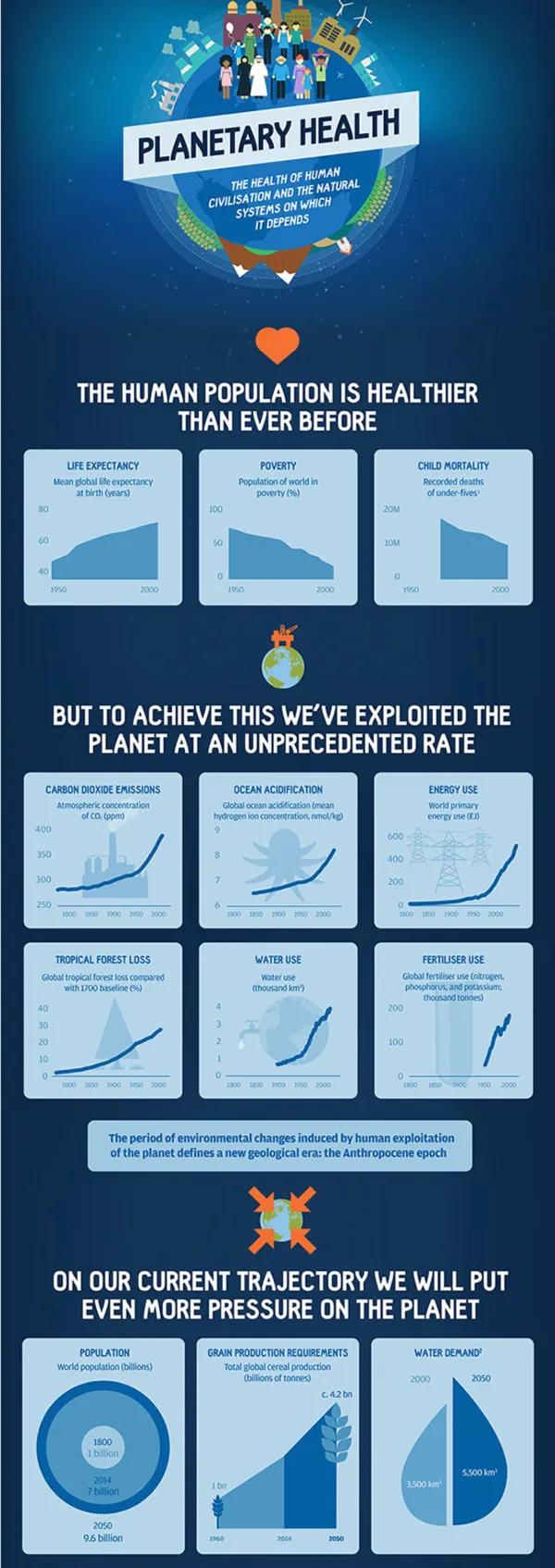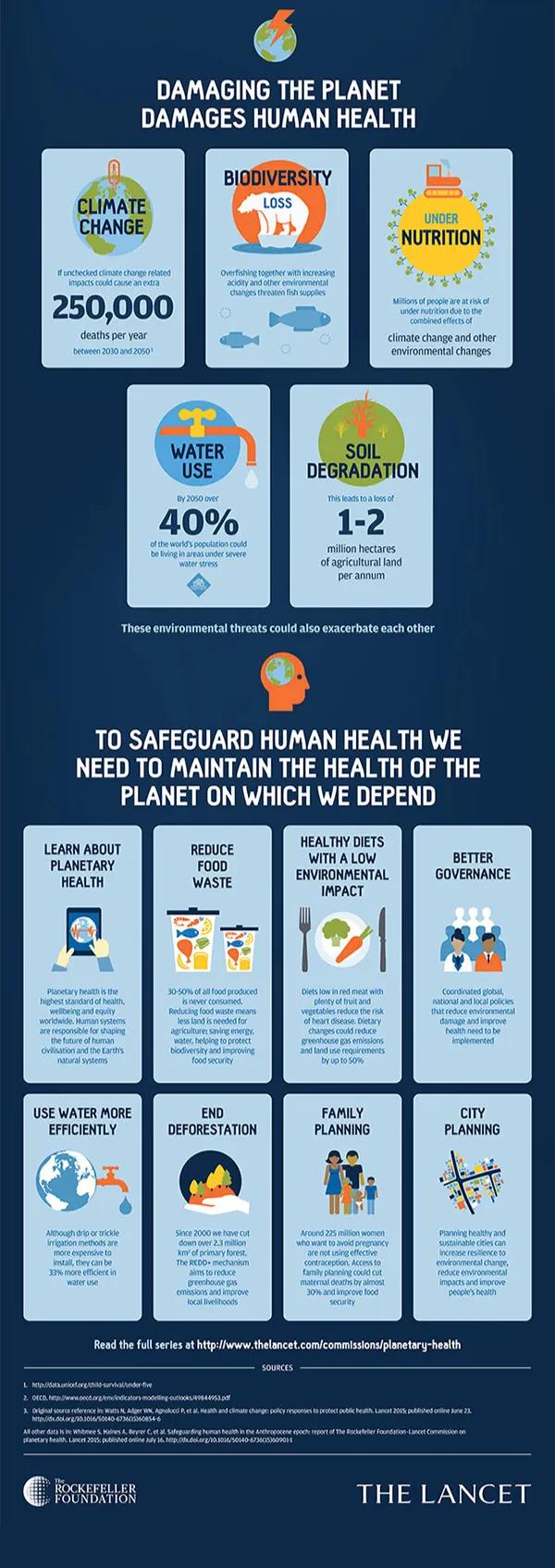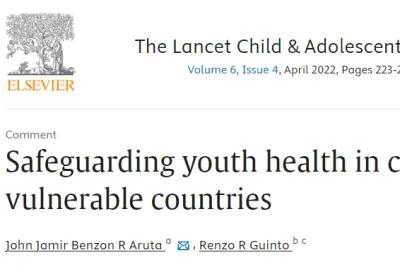
Planetary Health is where people and planet collide
Today, we are facing a confluence of multiple crises affecting our collective health as well as that of this planet that we inhabit – Earth. These include infectious disease outbreaks and pandemics, rising food and water insecurity, rapid biodiversity loss and climate change. These crises are driven by a complex interplay of human-generated political, social, economic, and environmental factors, and have dire humanitarian consequences. The deterioration of our collective health and the health of the natural world across the planet are accelerating ever more rapidly, diminishing the chance of healthy and happy lives and survival for succeeding generations.
And so there is a need for a new approach that emphasizes humanity coming together, assuming greater responsibility for our collective actions, working with a stress on equalizing responsible access to and use of limited resources, underwritten by the need to act urgently, here and now. In response to these challenges, planetary health – a new field and vision – has emerged.
Planetary health is the achievement of the highest attainable standard of health, wellbeing, and equity worldwide through judicious attention to the Earth’s living systems and the political, economic, and social forces that shape them.
In order to advance humanity’s wellbeing, the declining state of planet Earth can no longer be ignored
Recommended Reads
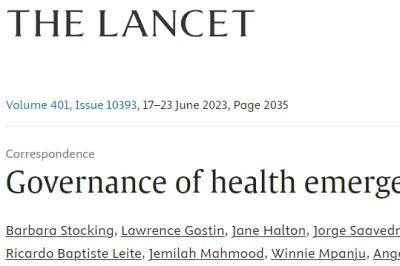
Governance of Health Emergencies
There have been many analyses of the COVID-19 pandemic but little discussion of the governance failures, especially the need for cross-government, multisectoral engagement, and leadership by heads of state and governments at both national and global levels.
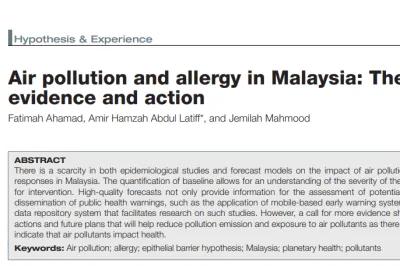
Air Pollution and Allergy in Malaysia: The Need for Evidence and Action
Air pollution is not a modern phenomenon. As early as 2400 years ago, there are documented evidence of concern that air pollution causes various illness. Increasing emissions of pollutants globally and the continuous advancement of ground based and remote sensing technology have allowed better quantification of episodic air pollution events as well as the increasing background pollutant levels over several decades. The Great London Smog (United Kingdom) in 1952 and an earlier lethal haze event in Donora (1948, United States) highlighted the adverse health impacts of unregulated emissions.
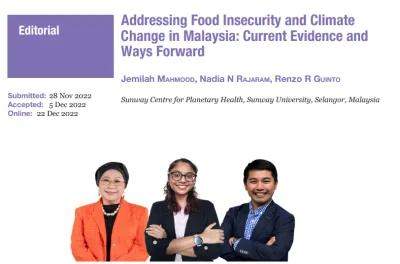
Addressing Food Insecurity and Climate Change in Malaysia: Current Evidence and Way Forward
Access to sufficient, nutritious food is an urgent, mounting global problem that has been exacerbated by the COVID-19 pandemic. In 2020, up to 30% of the global population faced food insecurity, a 4% increase from the preceding year, with great variation across regions. The highest levels of food insecurity were reported in the African continent, where more than half the population (59%) reported poor access to food.
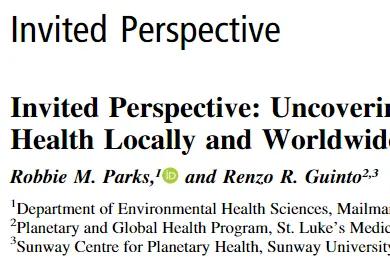
Invited Perspective: Uncovering the Hidden Burden of Tropical Cyclones on Public Health Locally and Worldwide
As climate change and health researchers of Filipino heritage, we both are all too directly familiar with the cycles of devastation that typhoons (such as Typhoon Haiyan1in 2013 and Typhoon Noru2in 2022) and other tropical cyclones can leave in their path. For our families, the destruction wrought by tropical cyclones has mani-fested as downed trees, damaged or destroyed homes, and uprootedlives. Sadly, such traumatic experiences are commonplace when tropical cyclones make landfall, be it in the Philippines, China, Mexico, the United States, or elsewhere.
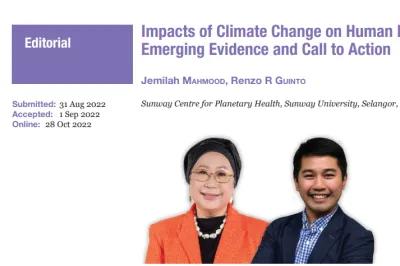
Impacts of Climate Change on Human Health: Emerging Evidence and Call to Action
It is already widely known that the climate crisis is an existential threat that is already impacting every aspect of human society and the planet. Hence, action from all sectors is not only necessary but urgent. One area that requires immediate attention is the impact of climate change on human health. For the past three decades, there have been numerous efforts from the academic and policy worlds to highlight the immutable connection between human health and climate change.
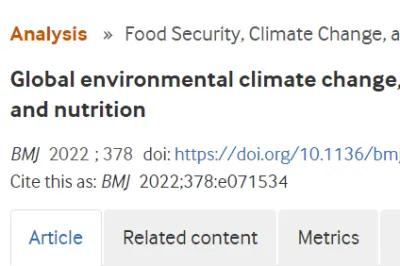
Global Environmental Climate change, Covid-19, and Conflict Threaten Food Security and Nutrition
September 2021 saw the United Nations Food Systems Summit (UNFSS) take place in New York. It focused on the “three Cs” that are driving disruption to food systems and threatening recent progress in mitigating hunger, malnutrition, and undernutrition: global environmental climate change, covid-19 disease, and conflict. Summit delegates from 183 countries agreed that business as usual would not lead to the change necessary to achieve the sustainable development goals. Summit participants called for urgent action at scale.
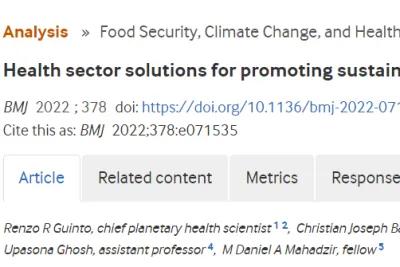
Health Sector Solutions for Promoting Sustainable and Nutritious Diets
Food is a critical foundation of human survival and a product of the Earth’s natural ecosystems and the human designed economic system. It is also a vital resource that is susceptible to social and environmental change, as shown by supply chain disruptions and price increases driven not only by the covid-19 pandemic and the war in Ukraine but by protracted crises in regions such as Africa, where massive food insecurities have been largely ignored for decades. These crises have shown that today’s global food system is far from resistant to shocks and stresses; its disturbance exacerbates already limited access, widens existing inequalities, and ultimately worsens nutritional status worldwide.
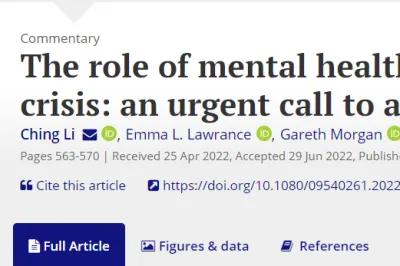
The Role of Mental Health Professionals in the Climate Crisis: An Urgent Call to Action
The climate and ecological crisis will constitute the defining public health challenge of the twenty-first century, posing an unprecedented global threat to all determinants of health, and to healthcare delivery systems. We believe that mental health professionals have a crucial role to play in responding to this crisis. Whilst responding to the mental health consequences of the climate crisis will remain a key role for us as mental health professionals, we argue that our remit goes beyond this, and should include advancing public understanding of the climate crisis, highlighting its impact on physical and mental wellbeing, and advocating for systemic changes to limit its impending harms.
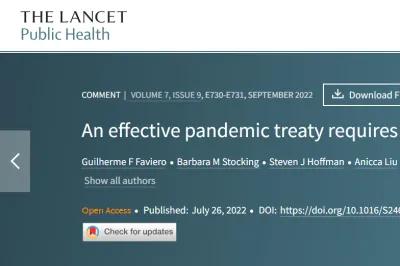
An Effective Pandemic Treaty Requires Accountability
The COVID-19 pandemic is estimated to have killed six to 18 million persons. This pandemic exposed major gaps in our global health security architecture that must be addressed to keep infectious disease outbreaks from becoming pandemics, and to effectively respond when they occur. To address these gaps, WHO member states created the Intergovernmental Negotiating Body to negotiate a treaty or international health agreement on pandemic prevention, preparedness, and response. These negotiations are currently underway, and an initial working draft of a proposed legal instrument has been made public.
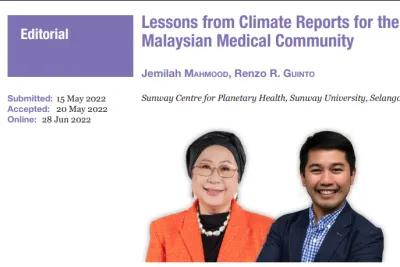
Lessons from Climate Reports for the Malaysian Medical Community
The period 2021–2022 is registering a number of alarming reports about the climate crisis. For the past year, the Intergovernmental Panel on Climate Change (IPCC), which is the United Nation’s body responsible for advancing climate science, published the three installments of their Sixth Assessment Report (AR6).
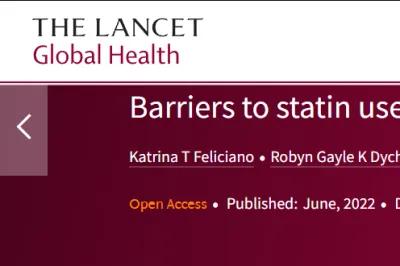
Barriers to Statin Use in the Philippines
Maja Marcus and colleagues (March, 2022) show that, between 2013 and 2019, 41 low-income and middle-income countries (LMICs) failed to meet the WHO targets for statin use in preventing cardiovascular disease. We write from the perspective of the Philippines—a southeast Asian LMIC, where cardiovascular disease has been the leading cause of death for the past 33 years. Challenges in health financing, health infrastructure, and health-service delivery are among the substantial barriers to increasing statin use in the country. We hope the Philippine can perspective inform policies that tackle issues surrounding statin use in other LMICs.
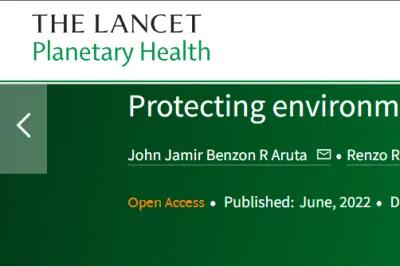
Protecting Environmental Defenders to Prevent Pandemics
Although the jury remains out with regard to the origin of the ongoing COVID-19 pandemic, this global health crisis is a stark reminder of the continuous threat of emerging infectious diseases, and the need to tackle their upstream drivers (eg, deforestation and illegal wildlife trade). However, proposals for preventing pandemics at the source tend to focus on high-level policies and actions, with relatively little support afforded to ground-level environmental defenders, who are arguably the most important front-line defence in stopping future zoonotic spillovers. Through sustained involvement in activities that reduce deforestation and biodiversity loss (eg, lobbying against powerful industries or politicians, and patrols to curb illegal harvesting), environmental defenders face increasing duress, ranging from occupational burnout to life-threatening attacks. Protecting the welfare of environmental defenders must be part of the solution to preventing future pandemics.
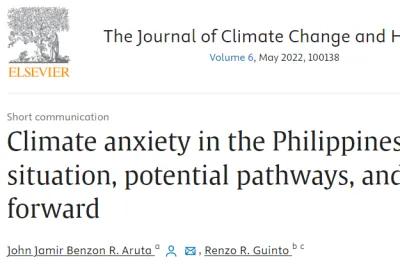
Climate Anxiety in the Philippines: Current Situation, Potential Pathways, And Ways Forward
The concept of climate anxiety, or the psychological distress attributed to the climate crisis, has emerged in recent years. However, there is a lack of consensus on its definition. Some scholars characterize climate anxiety similarly with the affective, physical, and behavioral symptoms of anxiety disorders, while others conceptualize climate anxiety as extreme worrying which includes a wide range of emotions about climate change (e.g., anger, depression, hopelessness, frustration, etc.
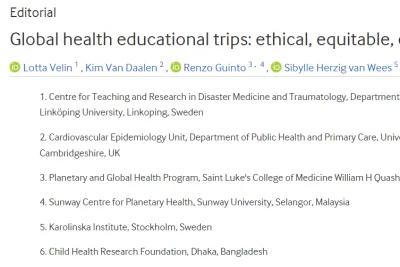
Global Health Educational Trips: Ethical, Equitable, Environmental?
Global health education in medical schools and at premedical undergraduate levels in high-income countries is often limited to short courses aimed at introducing students to the topic. These courses frequently include or focus on trips to low and middle-income countries, so the students can ‘experience global health’.
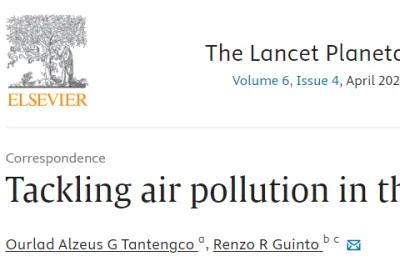
Tackling Air Pollution in the Philippines
Veronica Southerland and colleagues1 reported that between the years 2000 and 2019, most of the world's urban population lived in areas with unhealthy concentrations of fine particulate matter (PM2·5). The global average urban PM2·5 concentration in 2019 was 35 μg/m3, which is seven times the 5 μg/m3 limit set by WHO in its 2021 guidelines, resulting in more than 1·8 million deaths in 2019.1 Among the world's regions, the Western Pacific, where our country Philippines is located, is experiencing the highest levels of PM2·5-attributable mortality, exceeding the global urban average. Indeed, the Philippines is not exempt from the enormous health burden of air pollution.
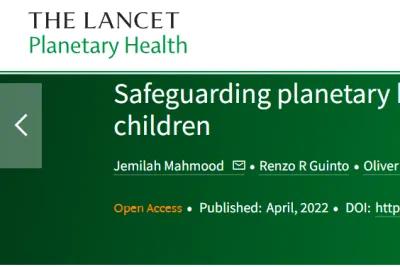
Safeguarding Planetary Health for Southeast Asia's Future Children
While we continue to deal with the ongoing COVID-19 pandemic, the past months have also revealed the sorry state of our collective planetary health, including in southeast Asia. Weeks after the 2021 UN climate change conference (known as COP26), Malaysia experienced intense flooding at a scale that has never been seen before, while the Philippines was once more hit by a super typhoon that killed hundreds and displaced a hundred thousand more. In the beginning of 2022, the Stockholm Resilience Centre announced that a fifth planetary boundary has already been breached—chemical pollution, particularly plastic—in addition to climate change, land use change, disrupted biogeochemical flows, and biodiversity loss. Southeast Asia is central source of plastic pollution, as most of the top five plastic-polluting countries are located in the region. Furthermore, as a biodiversity hotspot, the jungles of southeast Asia offer ideal conditions for another potential zoonotic outbreak, and it is vital to prevent future pandemics at the source.
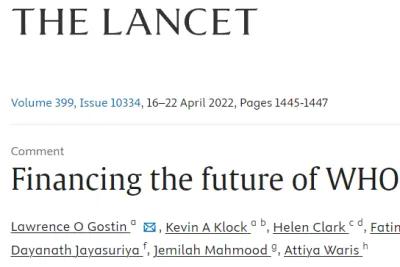
Financing the Future of WHO
WHO has anchored the global health architecture since its founding in 1948, and it is impossible to imagine another institution filling the void if the international community were to let it atrophy. While also confronting and guiding the response to COVID-19, WHO is engaged in the most consequential reforms since its founding, including negotiating a global pandemic agreement and revising the International Health Regulations. Underpinning all these reforms is the need for robust and sustainable financing.
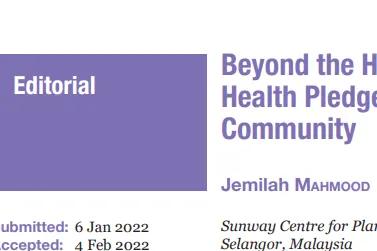
Beyond the Hippocratic Oath: A Planetary Health Pledge for the Malaysian Medical Community
Today, humanity is facing a myriad of crises affecting our collective health as well as that of planet Earth, driven by a complex interplay of political, social, economic, environmental and humanitarian factors. The global SARS-CoV-2 (COVID-19) pandemic has provided unquestionable evidence of the critical relationships between health, environment and economy, and tested the resilience of societies, including in Malaysia where we encountered first-hand the effects of a compounding disaster during the torrential downpours that befell eight states in December 2021, and again, through the unforeseen tornado-like freak storm or fair-weather waterspout in Ipoh just days ago. The World Health Organization estimates that one out of four deaths globally result from exposure to environmental threats.
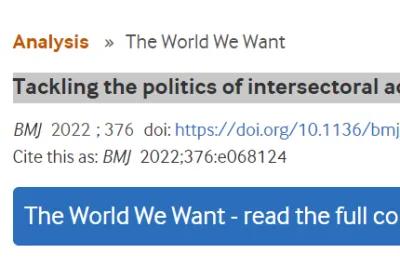
Tackling the Politics of Intersectoral Action for the Health of People and Planet (7288)
Human activities are wreaking extensive damage on the natural systems of the planet and undermining the prospects for the health of current and future populations. The 2021 report of the Intergovernmental Panel on Climate Change provided further evidence of the increasing urgency of responding to the threats posed by climate change—which the UN secretary general labelled “a code red for humanity.
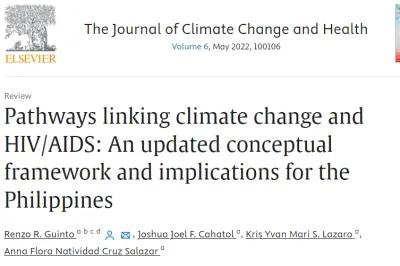
Pathways Linking Climate Change and HIV/AIDS: An Updated Conceptual Framework and Implications for the Philippines.
As we commemorate the 40th anniversary of the discovery of Human Immunodeficiency Virus (HIV) while fighting the ongoing COVID-19 pandemic, another global crisis - climate change - is threatening the progress achieved so far in the global fight against HIV/AIDS. The climate emergency is anticipated to generate dire health consequences worldwide in the coming decades. While the pathways that link climate change and different disease areas are better understood, the connection between climate change and HIV/AIDS is still yet to be recognized both in research and practice. In this review, we update one of the frameworks on the HIV-climate nexus described in earlier literature. Four major pathways have been identified: extreme weather events; sea level rise; changes in precipitation and temperature; and increased air pollution. These pathways impact the spectrum of HIV/AIDS-related outcomes through changes in social systems, healthcare disruption, and other climate-sensitive diseases, influenced by the social determinants of health. We also reflect on the significance of this updated framework for the Philippines, a country that is both highly vulnerable to the climate crisis and facing a rising HIV/AIDS epidemic. The framework can aid countries like the Philippines in filling gaps in research, policy, and program design to mount climate-adaptive HIV/AIDS responses. The HIV/AIDS and climate justice movements must also join forces in calling for accelerated worldwide decline in greenhouse gas emissions from all sectors to stabilize the global climate - this will benefit not just people affected by HIV/AIDS but everyone.
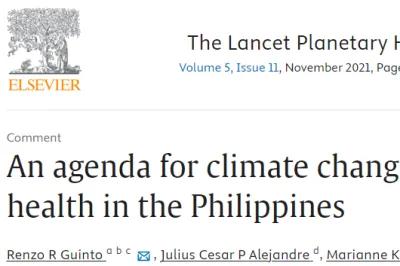
An Agenda For Climate Change and Mental Health In The Philippines
The latest report from Climate Cares, based at the Imperial College London, is a welcome addition to the small but slowly growing body of knowledge on the interconnections between climate change and mental health.1 The report identified the different direct and indirect causal pathways, synthesised evidence on current epidemiology and health-system responses from diverse countries, and laid out recommendations for future research, policy, and practice. The report's launch is timely and relevant as the climate crisis intersects with the COVID-19 pandemic, which is also generating a global mental health pandemic.
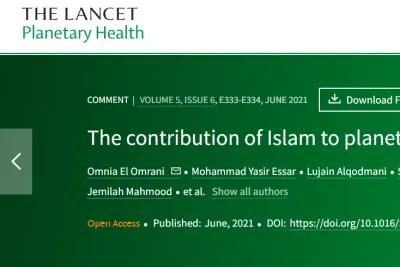
The Contribution Of Islam to Planetary Health
The human ecosystem interface, embodied by the planetary health paradigm, is deeply embedded in all the world's religions and indigenous traditions.1 Yet, the ongoing planetary health discourse remains predominantly Western-orientated. As calls to decolonise health ensues, there is a need to explore and acknowledge other non-Western perspectives, such as those originating from the Islamic faith.

Governance for Planetary Health and Sustainable Development
The Lancet | 16 July 2015
The landmark report of The Rockefeller Foundation– Lancet Commission on Planetary Health 1 is a clear and compelling articulation of the inextricable link between human health and environmental change. The report explores an array of complex, interlinked elements of concern, from environmental tipping points to the impacts of invasive species and the importance of protected areas. The United Nations Development Programme (UNDP) recognises planetary health as critical to achieving sustainable development across the economic, social, and environmental spheres—this ethos underpins our Strategic Plan for 2014–17
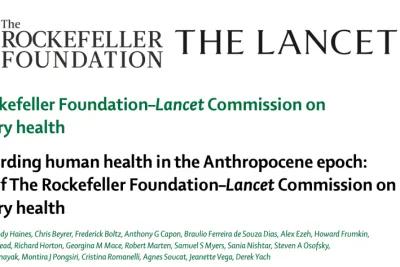
Safeguarding human health in the Anthropocene epoch: report of The Rockefeller Foundation–Lancet Commission on planetary health
Far-reaching changes to the structure and function of the Earth's natural systems represent a growing threat to human health. And yet, global health has mainly improved as these changes have gathered pace. What is the explanation? As a Commission, we are deeply concerned that the explanation is straightforward and sobering: we have been mortgaging the health of future generations to realise economic and development gains in the present. By unsustainably exploiting nature's resources, human civilisation has flourished but now risks substantial health effects from the degradation of nature's life support systems in the future. Health effects from changes to the environment including climatic change, ocean acidification, land degradation, water scarcity, overexploitation of fisheries, and biodiversity loss pose serious challenges to the global health gains of the past several decades and are likely to become increasingly dominant during the second half of this century and beyond. These striking trends are driven by highly inequitable, inefficient, and unsustainable patterns of resource consumption and technological development, together with population growth.



